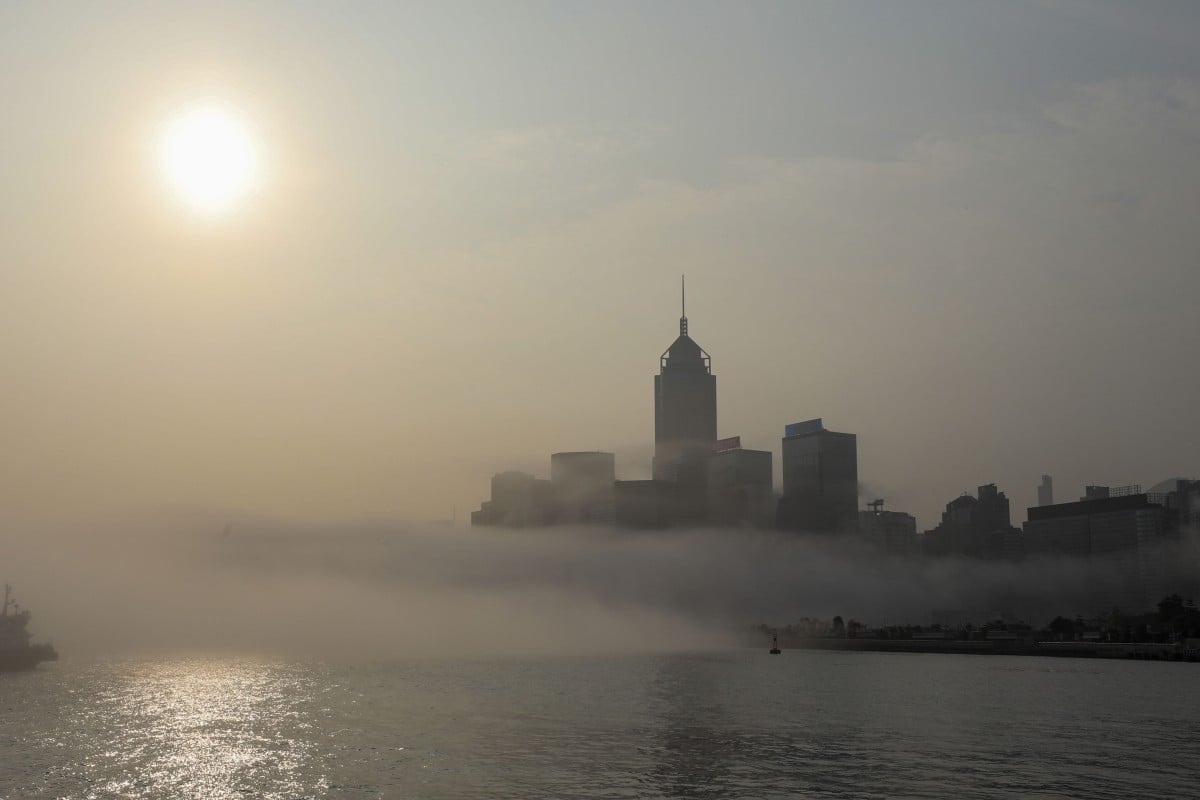
- Countries around the world are experiencing very hot weather due to climate change, and the humidity only makes it worse
- Global warming has made some places too hot to live, and the stress of the heat can be dangerous
 The humidity can often make the heat feel unbearable in Hong Kong. Photo: Jelly Tse
The humidity can often make the heat feel unbearable in Hong Kong. Photo: Jelly TseClimate change has sent global temperatures soaring, culminating in devastating heatwaves. In the one that struck Europe in July, the United Kingdom experienced its hottest temperatures ever, topping 40.2 degrees Celsius at Heathrow.
Hong Kong also experienced its hottest day of the year so far in July – the Observatory recorded 35.6 degrees at its headquarters in Tsim Sha Tsui on July 22 – making it the second highest July temperature on record.
On hot days, health officials recommend wearing breathable clothes, drinking plenty of water, and staying indoors. But this may not be enough as climate change makes heatwaves longer, more frequent and more extreme. Their effect on our bodies can be measured through wet-bulb temperature.
Hong Kong youth delegates to COP27 share why the city must educate students on the environment
What is wet-bulb temperature?
Wet-bulb temperature (WBT) is a measurement of dry air (or dry-bulb) temperature – what we typically read on a thermometer – combined with humidity.
This is examined by wrapping a thermometer in a wet cloth and blowing a strong wind through it – the reading is the WBT. It is always lower than the dry air temperature because as evaporation takes place, heat escapes with the water, hence cooling down the thermometer’s bulb.
When WBT is low, that means the air is dry, and water vapour can easily evaporate. Conversely, when WBT is high, it means the air is high in water content, making it more difficult for water to evaporate.
How do higher wet-bulb temperatures affect us?
WBT is used as a measure of heat stress and our body’s ability to keep itself from overheating (see graphic). When the WBT exceeds the upper limit of safety, sweat cannot evaporate, meaning the body cannot cool itself down – this can be fatal.
Tapio Schneider, a professor of environmental science and engineering at the California Institute of Technology, told US news site NBC News: “You can die just by sitting there. You do not need to move or do anything else. There’s simply no way to cool, and you overheat.”
A study published by the Proceedings of the National Academy of Sciences of the United States of America in 2010 estimated a WBT of 35 degrees was the upper limit of safety for humans. But a more recent study published in the Journal of Applied Physiology in January found that a WBT of 31 degrees was harmful to young, healthy adults – older people are likely much more vulnerable.
Rainwater unsafe to drink due to high levels of toxic chemicals, study finds
Climate change and wet-bulb temperature
High WBT has become more common in the last 40 years because of global warming, making some places too hot to live in.
A study published in Science Advances in 2020 revealed that some areas of the world had already reported a WBT of 35 degrees. It also found that there were about 1,000 occurrences of a 31-degree WBT in Pakistan, India, Saudi Arabia, Mexico and Australia.
UK heatwave triggers ‘false autumn’ as trees shed leaves early, berries ripen before fall
Globally, the number of times a WBT of 30 degrees was reached more than doubled between 1979 and 2017.
Nasa climate scientist and author of the study, Colin Raymond, told The Guardian that while previous studies projected this phenomenon would happen a few decades in the future, research “shows it’s happening right now”.
“The times these events last will increase and the areas they affect will grow in direct correlation with global warming,” Raymond said.
Find out more
Is Hong Kong vulnerable to high wet-bulb temperatures, and what does this mean for us?
Yes, Hong Kong has a hot and humid climate from May to August, with the average relative humidity in August reaching 81 per cent.
The Hong Kong Observatory defines high wet-bulb temperature (WBT) as 28.2 degrees or above, and according to the Observatory, the annual number of days with dangerous WBT is expected to increase in this century.
This means the future holds more unbearably hot, humid days. Those who work outdoors are at higher risk of succumbing to the deadly heat.